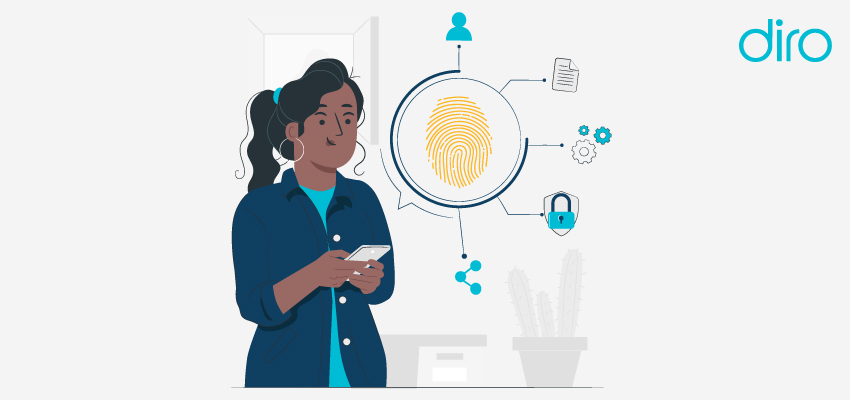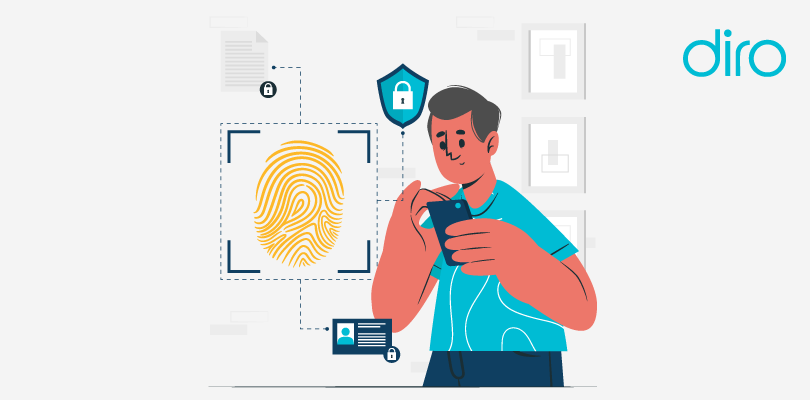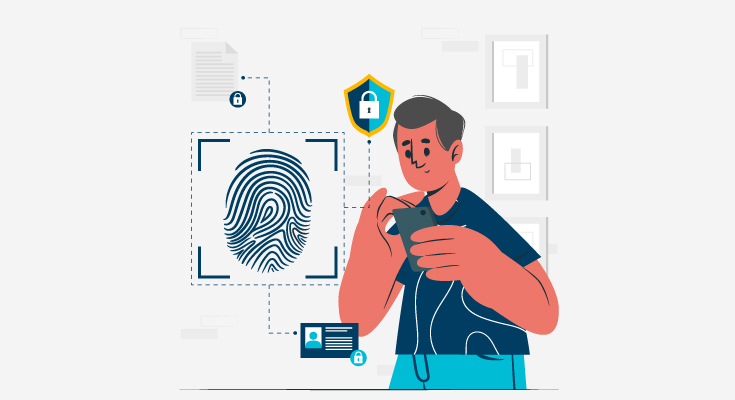Digital fraud keeps getting smarter, so do the ways to stop it. As a business, you need to be vigilant all the time. Especially if you’re a bank, crypto exchange, e-commerce, healthcare, or lending company. When you’re onboarding customers, you can’t afford to get ID checks wrong. Customers want quick signups, but businesses can’t afford to choose speed over security.
So, if you’re a business and you want to prevent fraud, you need to know about the top ID verification methods businesses are using in 2025.
Top-Rated ID Verification Methods
Government ID Scanning with OCR + AI Cross-Checks
When a user uploads a driver’s license, passport, or national ID, OCR (optical character recognition) extracts text data. Then, AI verifies if the text matches what’s visible on the card. It checks formatting, fonts, expiration dates, and cross-references security features like holograms or MRZ codes.
Some tools now detect 3D depth using your phone’s camera, verifying if the ID is a real object, not just a photo on a screen. This helps prevent presentation attacks.
Pairing this with liveness detection (we’ll get to that) gives you a solid front-line filter and eliminates the risk of identity fraud.
Biometric Authentication (Face + Voice + Behavior)
Facial recognition technology is slowly becoming obsolete with the rise of deepfake technology. Deepfakes and face masks have blurred the line between real and fake. Businesses today have to combine multiple biometrics to improve ID verification accuracy.
Some additional biometric safeguards to include:
- Face: Users take a selfie or turn their heads slowly while the camera records movement and depth. The system checks for texture, blink rate, and micro-expressions to confirm it’s a live person.
- Voice: For some services, a user speaks a phrase. Voice patterns, pitch, cadence, and breath noise are analyzed to match stored voiceprints.
- Behavior: How fast someone types, how they hold their phone, and how their mouse moves. These tiny signals add up to a unique behavioral fingerprint.
When used together, these methods are harder to fake and more reliable long-term.
NFC-based eID Verification
Many new passports and IDs come with NFC chips (especially in the EU and parts of Asia). Smartphones can now read them directly.
These NFC chips can be used for ID verification checks during customer onboarding, loan processing, mortgage approval, etc. Here’s how it works – a user taps their passport on the back of their phone. The app reads encrypted chip data – name, DOB, photo, issuing country. Since this data comes from a secure chip, it’s far harder to fake than an image scan.
NFC-based ID checks are especially popular with cross-border FinTechs and travel platforms. They’re also faster; users don’t need to take multiple photos or record videos.
Liveness Detection
We touched on liveness detection earlier. As spoofing someone’s face is easier than ever, including liveness detection in the ID verification process is crucial. AI-generated avatars, high-res photos, and even real-time deepfakes can pass as legitimate if your system isn’t paying attention.
During liveness detection, passive checks run quietly in the background. The system analyzes light reflection, pixel behavior, and tiny eye movements to spot whether a face is real.
Active checks ask users to perform actions, such as turn their head left, smile, blink, or say a phrase. Each step gives the system more proof that this is a live human, not a looped video.
Database Checks + AML Screening
A scanned ID and a selfie only show you who the user says they are. You still need to ask: Are they legit? This is where database checks help. These systems compare user data against:
- Government watchlists
- Sanction lists (OFAC, UN, etc.)
- Politically exposed persons (PEPs)
- Criminal records
- Known fraud databases
In FinTech and crypto, this step is key for staying AML-compliant. It’s also useful for businesses that want to avoid onboarding users with high fraud risk.
This is also where the DIRO document verification solution integrates seamlessly with the business’s verification pipeline. DIRO online document verification verifies documents provided by the users by cross-checking the information with the issuing source. This eliminates the risk of fraudulent document use for identity verification.
Newer systems use AI to flag suspicious patterns—even when the user isn’t on any known list. Think mismatched data points, high-risk locations, reused devices, or disposable emails.
Online Document Verification
During customer onboarding, mortgage approval, or loan application processing, users upload documents to prove their identity, their address, etc. However, it falls on the business to ensure the documents provided aren’t fake. DIRO’s online document verification solution helps businesses do just that.
DIRO offers instant proof of address, bank statements, and ID document checks by cross-referencing documents directly with the issuing source.
Apart from DIRO, modern document verification solutions check for these inconsistencies in the documents:
- Metadata inconsistencies
- Font tampering
- Template mismatches
- Fake logos or seals
- Editing traces (from tools like Photoshop)
Some even pull text from QR codes, barcodes, or serial numbers and match them with issuer databases.
Document fraud used to be easy to miss. Now, DIRO document verification can prevent the use of fake documents by 100%.
Device Fingerprinting
Every phone, laptop, or tablet has a unique device fingerprint, based on hardware specs, browser type, screen resolution, OS version, and more. When a user logs in, systems silently collect these signals. If the same ID shows up with wildly different device prints each time, something’s off.
It’s not a front-line method, but paired with biometrics or ID scans, it adds depth. Especially useful for detecting account takeovers or large-scale synthetic fraud.
IP Intelligence and Geo Verification
Where someone logs in from matters. If a user claims to be in New York but their IP shows up in Lagos or Kyiv, your system needs to ask more questions.
Modern platforms check:
- VPN/proxy use
- IP reputation (is it tied to bots or known fraud?)
- Geo consistency (same location as before?)
- Impossible travel (logins 5,000 miles apart within minutes)
Mobile Number and Email Validation
Email & Mobile number verification shouldn’t be used just on their own for ID verification. Validating a mobile number or email helps stop fake account creation. It’s not just about sending a code anymore.
Some mobile number verification tools can analyze:
- Number type (mobile vs VoIP)
- Region and carrier
- How long has it been active
- Known associations with fraud rings
Emails go through similar screening, checking domain age, MX record status, spam reputation, and breach history.
In 2025, email/phone screening has become smarter. It can predict with high accuracy if a new user will end up churning, spamming, or scamming.
Selfie with ID (Document + Face Matching)
One of the oldest techniques, and still widely used. Users take a selfie while holding their ID. Then, AI compares facial features across both images.
This method works well if:
- Lighting is good
- Camera quality is decent
- The user follows instructions
But it’s fading out in favor of better liveness checks and NFC reads. That said, it’s still used as a fallback when other tools fail or aren’t supported on a device.
Consent and Audit Trails
Verification doesn’t stop once you identify someone. You need records, especially if you’re in a regulated industry. Modern IDV platforms now create audit trails for every verification step. Timestamped logs, device info, consent captures, and video recordings (where needed) are all stored securely.
This protects your business from legal pushback and helps during compliance audits and in privacy-heavy markets like the EU, being able to prove lawful consent is no longer optional.
Conclusion – Which ID Verification Method Should You Choose?
There’s no one-size-fits-all. Your stack depends on your risk tolerance, industry, and user flow. But a smart ID verification flow in 2025 looks something like this:
- Email/phone validation to weed out bots
- Government ID scan + face match
- Liveness check
- AML + sanctions screening
- Device and IP analysis
- Optional: biometric check (for high-risk transactions)
And most of it should run in under 60 seconds.
Users don’t want friction. But they also don’t want fraud. The balance lies in building smart, invisible checkpoints that adapt based on risk.














